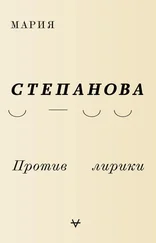Not-A-Chapter
Lyolya (Olga) Gurevich, 1947
Undated, written after 1944 and the return from evacuation.
Addressed to Berta Leontyevna Gurevich, her mother-in-law (the mother of Lyonya), who lives separately from them.
Dear Berta Leontyevna,
I came to see you, but Lyonya doesn’t know this and I would prefer it if it stayed between us.
It was very hard for me to come here, as you know I have my pride, but I have been thinking a great deal over these last few days and I decided that I had to do this. I came to see you with pure intentions. I felt very bad that I was the cause of our appalling conversation. I didn’t mean to hurt your feelings, it’s just that I haven’t been well recently, my nerves are in a terrible state and I was hurt that Lyonya didn’t consult me. Well, it doesn’t matter now. I’m ashamed that such a trivial thing has caused us to exchange bitter (and I think, on both sides, undeserved) reproaches.
I have forgotten everything you said to me and I beg you to forget everything I said, too. Life is hard enough as it is without making it harder with unnecessary rows.
You have a son and a granddaughter, and I have a husband and a daughter and I think that the purpose of life is, in the end, to bring joy to those close to us.
I came to see you to make it up with you, to put our differences aside. I hope you will understand why I came and that you will be able to feel warmly toward me.
Sadly you were out when I came round, so I’ve had to use your writing paper. I won’t write more, I am leaving with the hope that you will be with us for the New Year.
Allow me to kiss you.
Lyolya.
5. On One Side and on the Other
Obverse:
Painted porcelain boys and girls of various sizes, with bright mouths and caps of black or yellow hair. Other cheaper versions, plain basic-white. All are bisque dolls manufactured in Germany for decades from the 1840s. In the small town of Köppelsdorf, in the oak land of Thuringia, whole factories produced nothing but dolls. Most of them were large and expensive with real hair, bodies of kidskin, and flushed porcelain cheeks, but there were other simpler figures. In Ernst Heubach’s furnaces thousands of tiny dolls were fired, on sale for pfennigs and sold everywhere, like boiled sweets or soap. They looked like lost stubs of soaps, stiff little hands slightly in front of them, motionless legs in tiny socks, and because they were hollow and only their faces were varnished to save money, they could be put in the bath and they would float, little and modest, on their painted fronts.
There are many tales of these dolls as possessions. Apart from their obvious occupations (born “for the roll of a fist, for the life in a pocket” or the work of the tiniest units of humanity, as in the Tsvetaeva essay “My Pushkin”), they were placed on the shelves of dolls houses, hidden in Epiphany pastries to bring luck to the finder, and even, if it is to be believed, dropped into cups of tea instead of ice. I can’t find any confirmation or rebuttal of the story that the broken dolls were used as packaging chips for transported goods, but it is clear that they were the foot soldiers of the toy world, ephemeral, easily replaceable and multipurpose.
The lion’s share of this clay army was sold outside Germany. The tiniest were thumb-height and cost next to nothing. The bigger dolls were thirty to forty centimeters tall and were more prized by shopkeepers and their owners. Their export only stopped during the First World War, when selling dolls to the enemy began to feel awkward, and enterprising Japanese manufacturers took the place of the Germans. The Japanese dolls were made to the same model but using cheaper materials and only fired once. They smashed more easily, too. Lonely, valueless dolls crushed under the weight of time, like bird skulls crushed underfoot, they reappeared without limbs, black holes in place of joints. Some even returned from the earth, soil ground into the bisque, piles of broken dolls dug up from factory land. Years later their scarred white bodies were once again salable commodities, like everything from the past, sold as virtual lots on eBay, regiments of them, in sixes, tens, dozens. They are grouped carefully, or so it seems to me, with one or two near perfect specimens, victorious in the battle against time. An overfired back or a broken wrist hardly matters to these heroes, their heads are thrown back proudly, and their cheeks are round and glistening. The rest hardly aspire to being anything beyond splinters. This heap of survivors has only one name in the English-speaking world: frozen Charlottes.
Reverse:
Charlotte is one of the classic names of the Germanosphere, where the number of blonde little Lottes nearly outnumbers the contingent of Margaretes or Gretchens. Lotte, the cause of Werther’s suicide, with her apples and Brötchen, a pink band round her white dress — and before you know it she’s back as Thomas Mann’s muse. Goethe’s Lotte, who came involuntarily to mind in 1939 when the old world crumbled under the jackboots of the new. Despite this, the German dolls were only called “Charlottes” in America.
On February 8, 1840, the New York Observer reported: “A young woman, whose name is given as Miss _____, froze to death while riding twenty miles to a ball on the eve of January 1, 1840.” A Portland journalist, Seba Smith, known for his love of maudlin subject matter, used the story as the basis for a ballad, which had some success: a few years later the “blind Homer of Benson, Vermont,” William Lorenzo Carter, set it to music as “Young (or Fair) Charlotte.” The 1840s was a time of snow fascination, the romance of the blizzard and frost. In the early 1840s Hans Christian Andersen published his “Snow Queen”: “She was fair and beautiful, but made of ice — shining and glittering ice. Still she was alive and her eyes sparkled like bright stars, but there was neither peace nor rest in their glance. She nodded toward the window and waved her hand.” Seba Smith wrote a second snowy ballad in the early 1840s “The Snow Storm,” in which a young mother perished to save her baby, but the success of this fell far short of his “Young Charlotte.”
“Young” or “Fair” — the song was sung with interchangeable epithets to suit sentiment across ten US states, and its story is both like and unlike the version of Hans Christian Andersen’s “The Red Shoes,” where the girl’s terrible vanity is the cause of her undoing and amputation. But there is no morality, no anguish in “Young Charlotte,” the text has the marmoreal balance of an antique frieze. A beauty rides to a ball with her intended, on a winter’s night, desiring to be “seen,” and so they drive across the snowy hills to the sound of horses’ hooves and merry bells and all she wears is a silken coat and a silken scarf. The sleigh’s speed increases with every verse of the ballad (“Young Charlotte said with a trembling voice: I am growing warmer now”), the stars shine coldly and the ballroom grows closer and closer. But when they arrive the heroine is cold and hard as stone. One of the less polite names for this song was “A Corpse Going to a Ball.” The young man dies of a broken heart and is buried alongside his love.
The little china figurines crossing the Atlantic from Europe would soon be known as “frozen Charlottes” because of their rigid little bodies. To this day they are known by the same name, it’s become a shorthand for these creatures of horror, the tiny white people of nightmares, and without a voice they are unable to object. The male figurines rapidly became known as frozen Charlies and they were no more able to object. Their curls their socks and their spectral whiteness makes them look like the small gods of a less ancient pantheon. Unlike the Greco-Roman Gods, who lost their color together with their power, there was never enough paint to go round for all the frozen Charlottes.
Читать дальше











